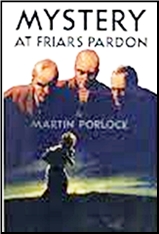Thu 8 Oct 2009
CRIME BY NIGHT. Warner Brothers, 1944. Jane Wyman, Jerome Cowan, Faye Emerson, Charles Lang, Eleanor Parker, Stuart Crawford, Cy Kendall, Charles Wilson. Based on the novel Forty Whacks by Geoffrey Homes (Daniel Mainwaring). Director: William Clemens.

All of the fire power in this 1940s private eye movie is on the female side: Jane Wyman, who receives top billing: four Oscar nominations, one win (Johnny Belinda, 1948); Faye Emerson: two Emmy nominations; three Oscar nominations, one Emmy nomination, one Golden Globe nomination.
Jerome Cowan, who plays PI Sam Campbell (named Humphrey Campbell in the book), gets my nomination in a Top Five William Powell look-alike contest, but he has little else going for him but more than enough charm to get by. I regret to say that I haven’t read the book itself, unless I read it long ago when it was reprinted in paperback by Bantam as Stiffs Don’t Vote way back in 1947, so I can’t tell you one way or another about the similarities (or the lack thereof), but one thing I can tell you is that there’s plenty of plot.
And not all that much comedy relief, I am relieved to be able to tell you, but Cy Kendall as the semi-corrupt local Sheriff Max Ambers, overweight and alternately a jovially unctuous sycophant then a resentful small town cop, nearly steals the show. Sam Campbell is supposed to be the kind of guy who girls can’t keep their eyes off of, including the girl at the hotel switchboard who can’t keep her eyes on the job, but I’ve decided to simply chalk that up as just another Hollywood fiction.

Dead is the father of Campbell’s client’s ex-wife, with whom he’d had a vicious argument some time ago (and losing a hand by means of an axe in that particular incident).
This is motive enough, one supposes, and according to the local law, it is, but (a) clients are supposed to be innocent, and (b) there is another matter of some secret chemical formulas that are missing as well.
There is a pretty good attempt on the killer’s part to leave both a false trail and a delightful assortment of false clues. As I say, there’s plenty of plot, and plenty to enjoy in this movie, another highlight of which is …
I forgot to tell you. Jane Wyman plays Robbie Vance, Sam Campbell’s very charming and very possessive assistant in this movie, and you should see the claws come out when she thinks Faye Emerson’s character is poaching on her territory. Rowrrrr …

[UPDATE] Later the same day. As soon as I can get to it, I’ll post Bill Pronzini’s review of Forty Whacks from 1001 Midnights. As I suspected, there’s only a brushing acquaintance between the book and movie, or as my family used to say when I was growing up, they’re only shirttail cousins.














